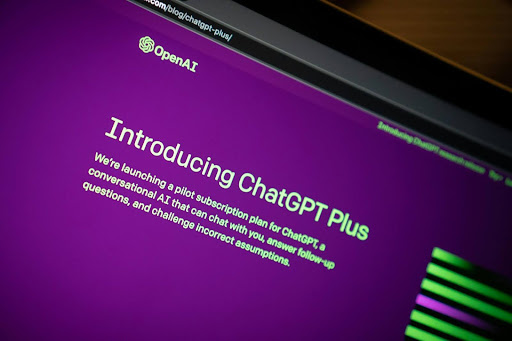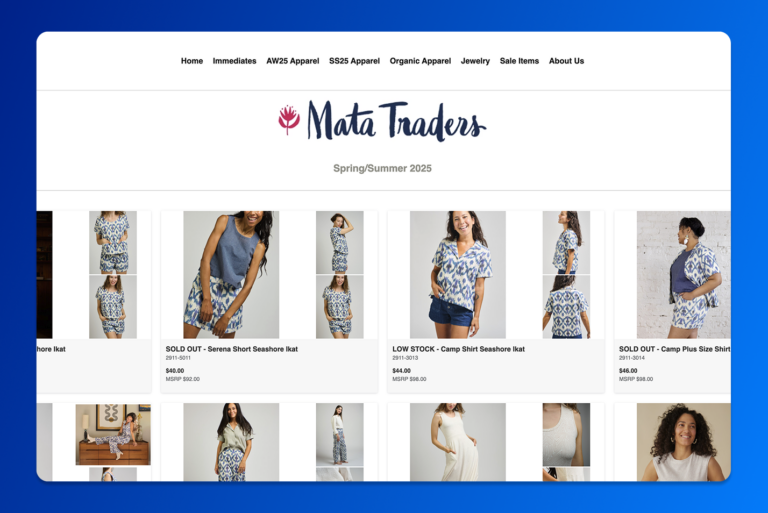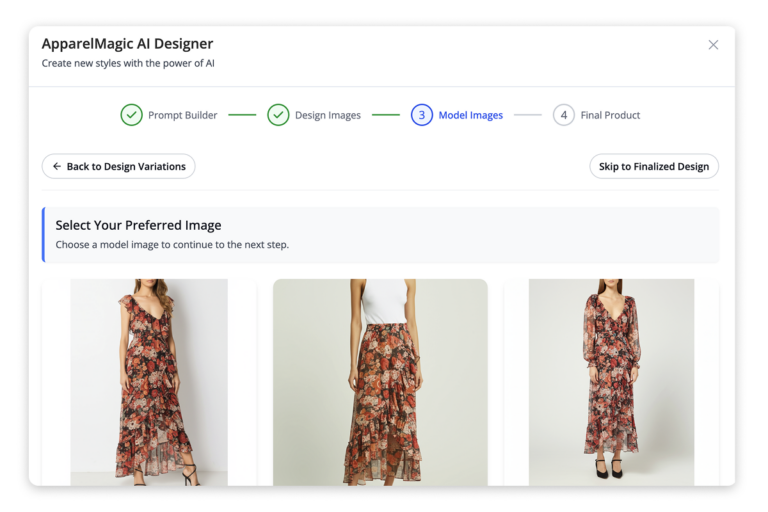The integration of OpenAI’s API into an ERP system offers great benefits for apparel brands aiming to scale efficiently and effectively. ERP, or enterprise resource planning, systems, centralize various business functions such as inventory management, finance, and human resources into one integrated system. And with the right API, they can expand their functionality even further.
For that reason, ERP API integrations will most definitely become one of the most crucial tools for streamlining business processes, managing data, improving efficiency, and facilitating seamless interaction with other applications.
As the fashion industry grapples with fast-changing trends and consumer demands, the ability to leverage advanced AI technologies can be a game-changer.
OpenAI’s suite of tools, including GPT for natural language processing and GPT-4o for code generation, provides powerful capabilities to streamline operations, enhance decision-making, and drive growth.
In this article, we explore how ERP API integration can boost operations in critical areas such as automated design trend analysis, and supply chain optimization.
Automated Design and Trend Analysis
With OpenAI’s ERP API integration and powerful natural language processing capabilities, brands can enhance their design and trend analysis. For instance, GPT can analyze vast amounts of text data from market trends, consumer feedback, and social media that the ERP can generate to identify emerging fashion trends.
This allows brands to dynamically adjust their product offerings to match current consumer preferences, significantly speeding up the design-to-market process.
Moreover, the integration of DALL-E, an image generation and analysis model, can assist in visualizing new designs before prototype development, saving both time and resources as well as streamlining production planning within the ERP system.
This integration not only streamlines design processes but also positively impacts business functions such as inventory management and supply chain optimization, by providing a single source of truth for managing these core operations more efficiently.
ERP Integration for Supply Chain Optimization
OpenAI’s API can also play a pivotal role in optimizing supply chain management. OpenAI tools such as GPT 3 and GPT-4o can automate repetitive tasks such as data entry and complex process workflows by exporting all the data generated from the ERP system to a separate document.
Additionally, ERP’s predictive capabilities can forecast potential supply chain disruptions, and the emphasis on secure data transfers is crucial for protecting sensitive information during these operations. Then the API can be used to organize and/or better present those findings.
This not only minimizes the risk of stockouts and overstocking but also ensures a smoother supply chain operation even during uncertain market conditions.
Through these applications, OpenAI’s API can provide apparel brands with a competitive edge by automating complex processes, enhancing decision-making, and ultimately driving growth as they scale. The key is a strategic integration that aligns with specific business needs and operational goals.
Intelligent ERP Inventory Management
One additional area where OpenAI’s API integration can significantly enhance the already great apparel ERP systems is intelligent inventory management. By leveraging the predictive analytics capabilities of GPT and OpenAI API along with the capabilities the ERP already has, brands can gain a granular understanding of inventory needs and optimize stock levels more precisely.
And the challenges of data extraction from ERP systems can be completely avoided with the right API.
For instance, this kind of ERP API integration can better predict demand fluctuations based on historical sales data, seasonal trends, and real-time market analysis, ensuring that inventory is maintained at optimal levels.
The role of ERP data in this process is crucial, as it directly influences the accuracy of demand predictions and the optimization of inventory levels. This reduces the risk of overstocking and stockouts, which are critical for maintaining customer satisfaction and minimizing holding costs.
Enhanced Customer Insights and Personalization
Integrating OpenAI’s API into an ERP system can profoundly enhance how apparel brands understand and interact with their customers. ERP’s ability to gather all data and GPT’s ability to analyze that said data allows brands to gain deeper insights into customer sentiments and preferences.
This capability enables the transformation of raw data from customer interactions into actionable insights, which can inform product development and marketing strategies.
For instance, many companies now utilize GPT to analyze customer feedback across multiple channels, effectively tagging and summarizing this feedback to highlight prevalent customer issues or praises. This automated analysis helps brands quickly identify common themes or concerns, allowing for rapid response and adaptation to customer needs.
Moreover, both the ERP and its integrated API can deliver customized shopping experiences. This integration allows brands to give customers personalized product recommendations, tailored marketing messages, and proactive customer service interventions, significantly enhancing customer engagement and satisfaction.

How to Integrate The API
1. Define Objectives and Requirements
- Identify Goals: Determine what you want to achieve, such as automating trend analysis or optimizing supply chain management.
- Assess ERP Capabilities: Understand the current ERP system’s functions and integration capabilities.
- Choose OpenAI Tools: Decide which OpenAI tools (GPT-4, DALL-E) you will use.
2. Prepare Your Environment
- Set Up Your OpenAI Account: Register and obtain API keys.
- Review Documentation: Understand OpenAI API endpoints and authentication.
- Development Setup: Ensure your development environment has the necessary tools (e.g., Python).
3. Data Preparation
- Extract ERP Data: Identify and extract relevant data from the ERP system.
- Data Cleaning: Clean and format the data for processing.
4. API Integration
- Authenticate API: Securely connect to OpenAI’s API using your API key.
- Send Data: Write scripts to send ERP data to OpenAI.
- Process Responses: Integrate insights back into the ERP system.
5. Workflow Automation
- Automate Tasks: Set up workflows to send data and process results regularly.
- Monitor Performance: Continuously monitor and optimize integration.
6. Security and Compliance
- Secure Data: Use HTTPS and encryption for data transfers.
- Ensure Compliance: Adhere to data protection regulations (GDPR, CCPA).
7. Testing and Deployment
- Test Thoroughly: Conduct extensive testing in a staging environment.
- Deploy: Move the integration to production after successful testing.
8. Training and Support
- Train Staff: Educate users on new features and insights.
- Maintain and Support: Set up support channels and plan for regular maintenance.
If you want a more in-depth tutorial, check out the official guide from OpenAI.
Conclusion
A strategic API ERP integration provides a good solution for apparel brands aiming to scale efficiently in a competitive market. By automating complex processes and leveraging advanced analytics, brands can enhance design and trend analysis, optimize supply chain management, and improve customer insights.
OpenAI’s tools enable predictive modeling, automate routine tasks, and deliver personalized customer experiences, thereby enhancing operational efficiency and decision-making.
Furthermore, intelligent inventory management through AI-driven models ensures optimal stock levels, reducing the risks of overstocking and stockouts. This holistic approach not only drives growth and scalability but also positions brands to swiftly adapt to market dynamics and consumer demands.
The key to success lies in strategically aligning these AI capabilities with specific business needs and goals, ultimately providing a competitive edge and fostering sustainable growth. Emphasizing ERP integration, apparel brands can transform their operations, streamline processes, and achieve greater market responsiveness, securing their position at the forefront of the industry.







